Acupressure points for stress and anxiety
by Dr. Laura Erwin
Welcome to our guide on acupressure, a simple and effective way to relieve stress and tension. This practice can help you find calm, whether you’re feeling overwhelmed by a sudden event or dealing with stress that has built up over time. We’ll show you how to use therapeutic touch on specific points of your body to help you feel more balanced.
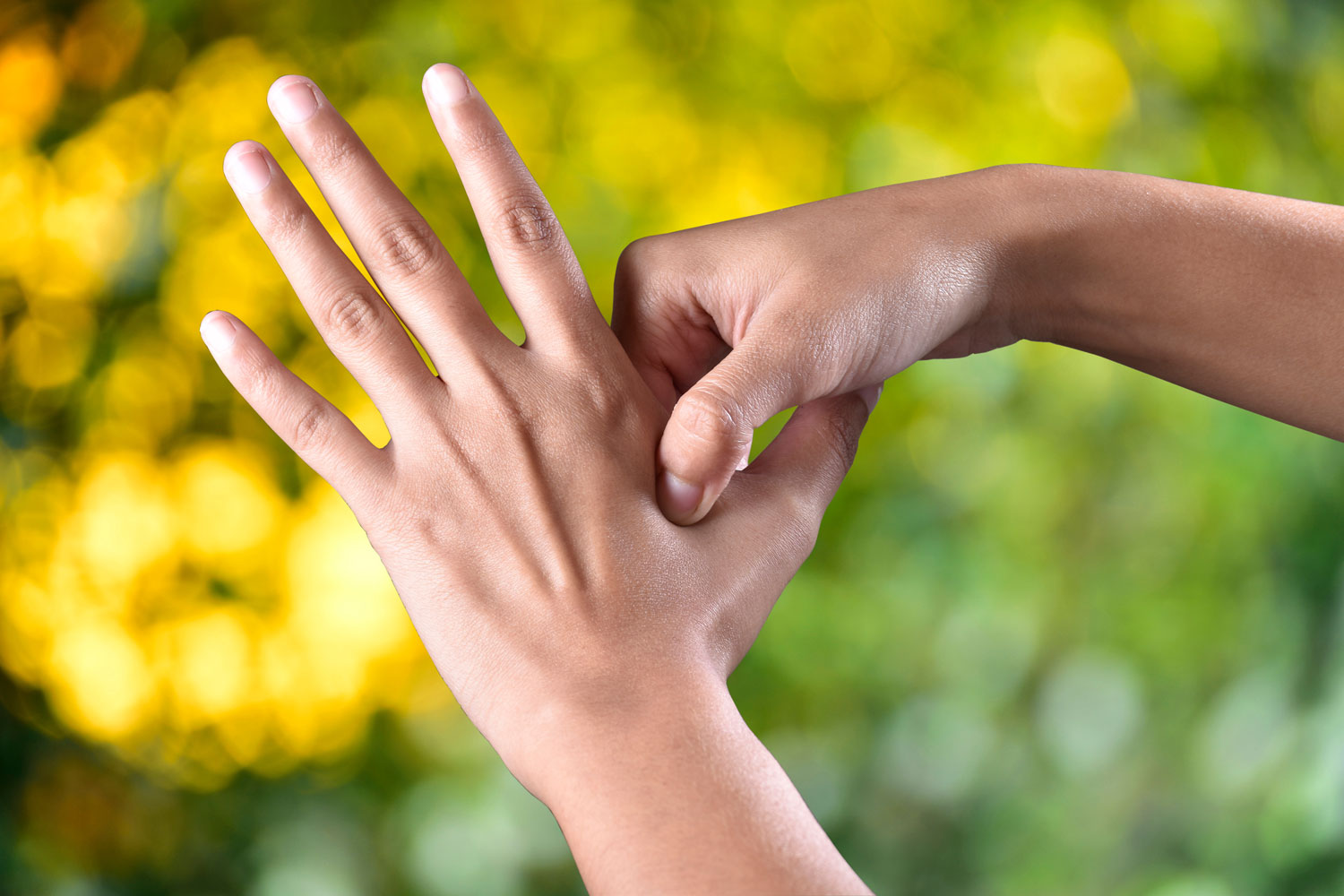
What is acupressure?
Acupressure is a form of therapeutic touch that utilizes common acupuncture points (acupoints) located at specific places on the body. Typically, these acupoints have a higher concentration of energy or qi and can become blocked or develop tension when out of balance. Tension accumulates and blocks up the flow of energy in the channels and can become painful and tender.
Acupressure helps to release muscular tension and free up stagnation in the area, allowing for improved blood flow and qi circulation. With increased blood flow, the cells in the area can receive more oxygen and nutrients and settle back into a healthful vibrancy.
How to perform acupressure?
Acupressure is a very safe and easy form of self-care and can be done as a quick moment of rebalancing or as part of a deeper meditative practice. I recommend taking a few minutes of time to yourself to have quiet calm, settle into some slow relaxed breaths, and begin to listen more deeply to your body about what you need.
When you find an acupoint, often it will feel sore or tender, and that is an indication that you are in the right spot. Begin with light pressure and slowly deepen, focusing on the centre. *This will feel better with short nails
There are various techniques for applying acupressure for relieving stress:
- Press and hold firmly for one-five minutes with a fingerpad
- Gently knead the acupoint with a knuckle
- Slow circular motion in one direction and then the other
- Soft tapping on the acupoint for one-five minutes
What are the benefits of acupressure?
Utilizing long and steady pressure at acupressure points is often the most powerful effect. After a minute or longer, the body begins to release neurochemicals called endorphins, which are a kind of endogenous pain killer. The endorphins cause a feeling of euphoria and relaxation and act to subdue the tension caused by stress and anxiety.
How to find acupoints?
The list below are common acupoints that are helpful for relieving stress and promoting feelings of relaxation and wellbeing. Follow the instructions for each point location. Avoid pressing directly on bones, and try to find the indentation or “valley” where the acupoint is found.
Common Acupoints for Acupressure
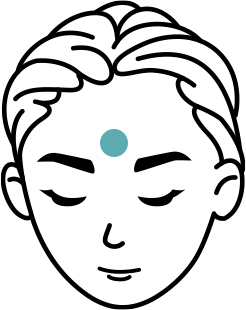
Yin Tang
Location: midway between the medial ends of the eyebrows
Indication: This point is a favourite in the clinic and is great for calming the mind to alleviate stress or help with sleep. It is also indicated for sinus congestion or frontal headaches.
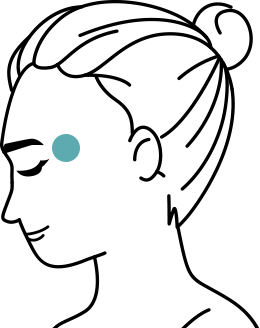
Tai Yang
Location: in the depression of the temple area bilaterally, at the midpoint of the lateral end of the eyebrow and the outer canthus of the eye
Indication: This point is another great point for tension headaches or eye strain.
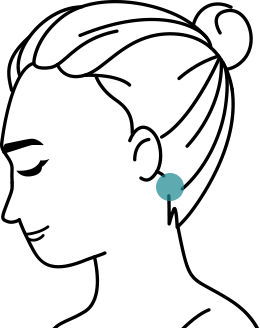
An Mian
Location: at the side of the neck, between the mastoid process of the jaw (below the ear) and the back of the neck where the sternocleidomastoid (SCM) muscle attaches to the scull.
Indication: This point name means “peaceful sleep” and it is the empirical point for improving sleep.
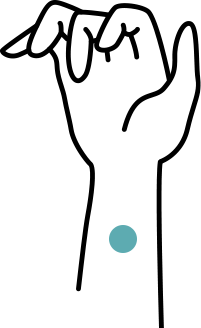
Nei Guan – PC6
Location: on the midline of the inner wrist, about the length of two thumb width’s from the wrist crease, between the tendons of m. palmaris longus and m. flexor carpi radialis
Indication: This is a very versatile point most commonly used to stave off nausea from early pregnancy or motion sickness (strong firm pressure), however it is also indicated for chest discomfort, heart palpitations, and strong emotions. Acupressure can help to expand the chest and diaphragm, calm the mind and settle the stomach.
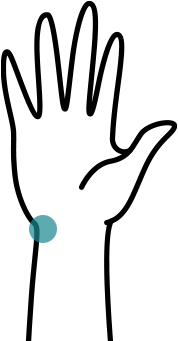
Shen Men – HT7
Location: at the ulnar side (pinkie finger) of the wrist crease in the depression on the radial side (thumb) of the tendon of m. flexor carpi ulnaris
Indication: This is a very common point for calming the mind. The name means “Spirit Gate” so conjures up the idea of connecting with your inner knowing and tapping into a deep well of nourishment. This is an excellent point for insomnia due to overwork or fatigue, or mental unrest due to chronic stress that has started to deplete your precious resources. It is also beneficial to calm down heart palpitations or flutters due to anxiety.
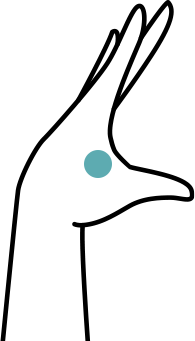
He Gu – LI4
Location: on the dorsum of the hand, on the webbed area between the thumb and index finger, at the midpoint of the metacarpal bone of the index finger
Indication: this is a very powerful qi moving point that is very effective at relieving pain. It can withstand strong pressure but be mindful if it is tender. This point is beneficial for various pains in the body
*Do not stimulate this point during pregnancy
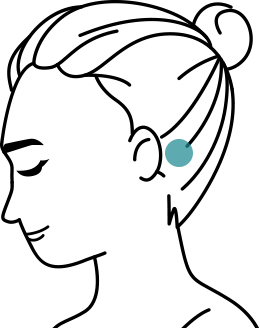
Ben Shen – GB12
Location: in the depression behind and below the mastoid process just below the earlobe on either side.
Indication: this point can be beneficial for insomnia and support in forgetting troubling thoughts which may be contributing to the difficulty in getting to sleep. However, be mindful of overuse as it may lead to loss of long-term memory.
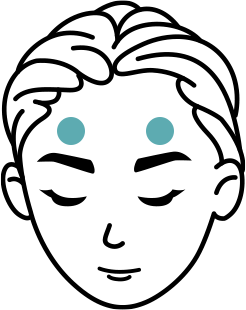
Yang Bai – GB14
Location: on the forehead, about the width of your thumb above the midpoint of the eyebrow on each side.
Indication: this point is beneficial for the eyes and can relieve headache. Utilized more for its activating energy, using acupressure on this point can counteract sleepiness, heaviness in the head or foggy mind.

Tai Chong – LR3
Location: on the top of the foot in the depression in the area between the metatarsal bones of the big toe and second toe
Indication: this is a very common “stress point” where you can tap into the Liver’s ability to soothe the flow of qi in the body, which can get tangled up with acute stress.
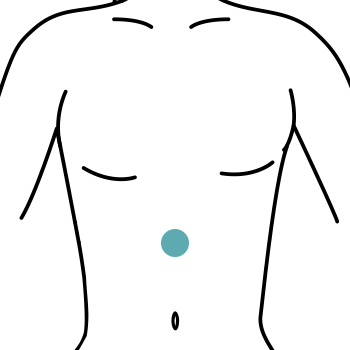
Zhong Wan – RN12
Location: on the midline of the upper abdomen, midway between the umbilicus and sternocostal angle of the ribcage
Indication: if you are someone who often has digestive dysregulation due to emotional upset, this is a great point to help to soothe the belly. A good technique is using slow circular motion in clockwise rotation, which will promote the flow of digestion.
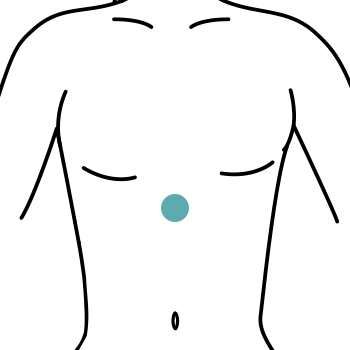
Jin Wei – RN15
Location: on the midline of the upper abdomen, just below the xiphoid process of the ribcage
Indication: this point is good for alleviating discomfort in the chest and diaphragm. It is beneficial for nourishing the qi of the body as well as calming the mind
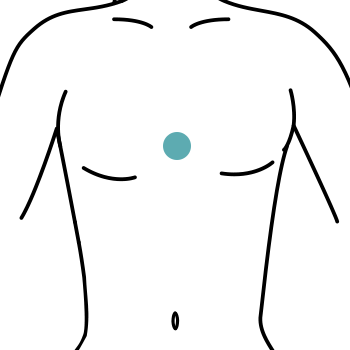
Shan Zhong – RN17
Location: on the midline of the chest, level with the fourth intercostal space, midway between the nipples
Indication: when stress is constraining the qi and causing chest pain, this point will help to soothe the discomfort and expand the chest. It can be helpful to ease breathing discomfort as well as settle heart palpitations.